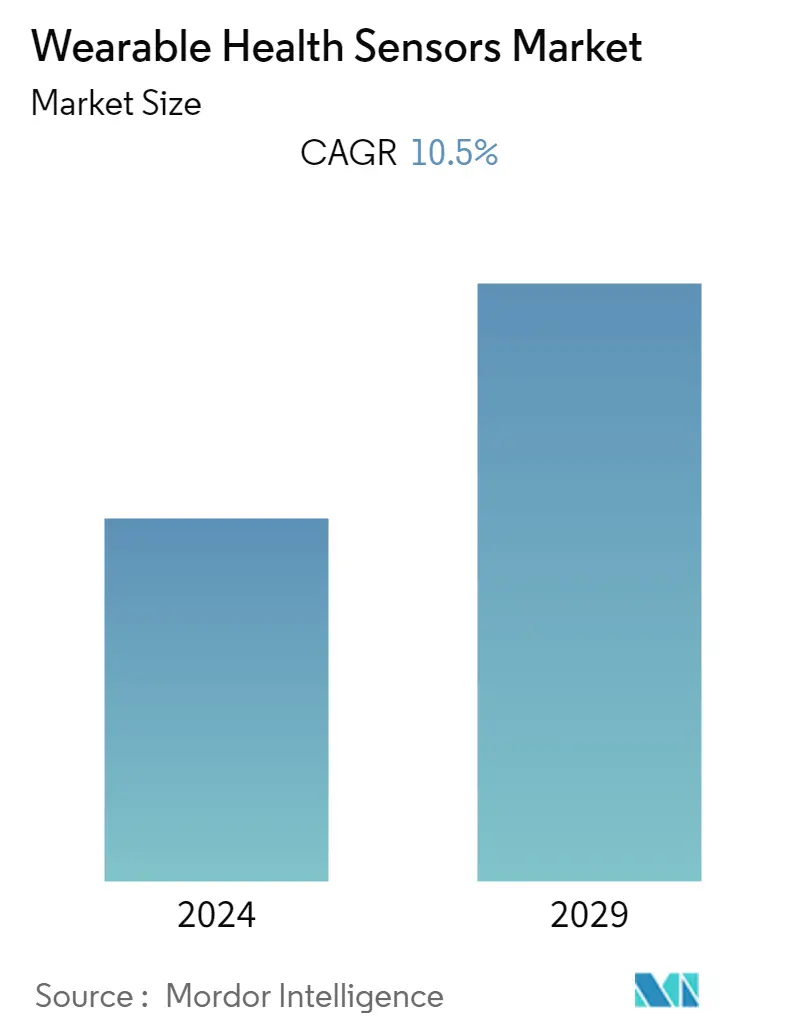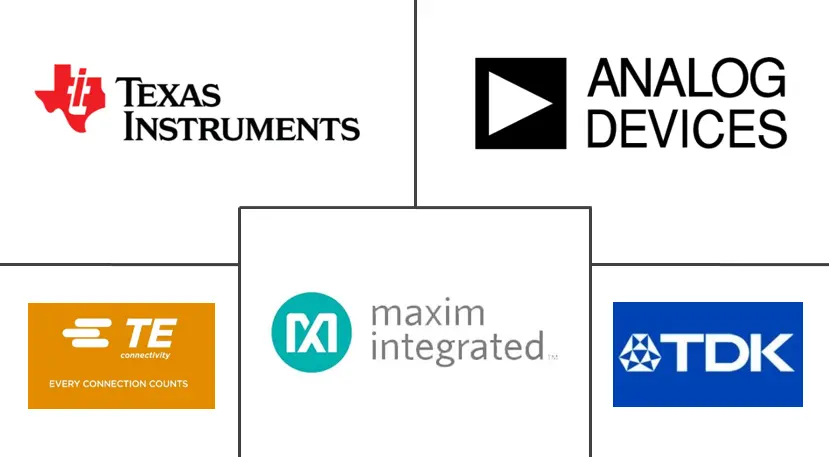Market Size of Wearable Health Sensors Industry

| Study Period | 2019 - 2029 |
| Base Year For Estimation | 2023 |
| CAGR | 10.50 % |
| Fastest Growing Market | Asia Pacific |
| Largest Market | Europe |
| Market Concentration | High |
Major Players
*Disclaimer: Major Players sorted in no particular order |
Need a report that reflects how COVID-19 has impacted this market and its growth?
Wearable Health Sensors Market Analysis
The Wearable Health Sensor Market is expected to grow at a CAGR of 10.5% over the forecast period. The miniaturization of physiological sensors, increasing growth toward advanced process sensors in smart gadgets, advancement in battery sizes, and increasing need for continuous monitoring in healthcare services are the key drivers making the wearable health sensors market grow lucratively. Wearable health sensors, such as accelerometers, gyroscopes, and other motion sensors, are expected to be incorporated into activity monitors, fitness devices, pedometers, golf and tennis swing analysis tools, and sports kinetics applications.
- Leveraging wireless connectivity, powerful application processing, and smartphone storage capabilities, wearable sensors are finding new use cases, such as remote patient monitoring, where the patient's motion data analysis can be sent directly to the physician, which may further boost the market growth.
- Furthermore, In August 2022, engineers from the Massachusetts Institute of Technology developed wearable wireless sensors without the Bluetooth module housed in them. It is a wearable sensor that transmits wirelessly without onboard chips or batteries. This project opens an avenue toward chip-free wireless sensors. The new sensor, called - 'e-skin', is an ultrathin semiconductor film of piezoelectric material which adheres to the skin, sensing the body's vibration. It also does not require any power source.
- Technological advances in health sensor devices can assist clinicians in identifying patients at high risk of disease, which is expected to drive market growth. For instance, in January 2021, Biosticker, a highly advanced on-body sensor that allows effortless monitoring of vital signs and actionable insights, was provided to clinicians from patients in hospitals or home care settings, creating a unique opportunity for the early detection of complications.
- The increased level of awareness concerning healthcare has created an emerging need for smart health sensor technologies and monitoring devices that can sense and provide users feedback about their health status for increased safety. Further, in February 2021, engineers at the University of California, San Diego, developed a soft, elastic skin patch that can be worn around the neck. It measures the wearer's glucose, lactate, alcohol, and caffeine levels while monitoring blood pressure and heart rate. Additionally, it analyzes several biochemical levels and cardiovascular signs in the human body.
- The key factors in the proliferation of wearable sensors in healthcare are the availability of low-cost MEMS technologies, low-power microcontrollers, and efficient and reliable telemetry modules. Furthermore, Honeywell offers the 26PC SMT (Surface Mount Technology) Series pressure sensor. This small, low-cost, high-value pressure sensing solution replaces the need of the healthcare professional to place a stethoscope under the pressure cuff, to hear the noise of the rushing blood.
- Machine learning and AI capabilities are taking healthcare professionals' skills to the next level, especially in the current healthcare industry. In support of this, IoT-compatible wearable sensors are also witnessing a decline in pricing, which leads to manufacturers offering wearable devices at a more affordable rate, thus encouraging various industries to adopt products catered to their systems and operations. Additionally, there has been a significant increase in the number of wearable devices sold over the past few years.
- Furthermore, as technical devices require continuous R&D for various features, industry players' ongoing technological advances are fueling the development of smartwatches. Amazfit Bip U Pro and BOAT Xplorer were launched in India in April 2021. PPG bio-tracking optical sensors in smartwatches continuously monitor heart rate.
- Further, the global population is driving a trend toward home healthcare. The COVID-19 pandemic accelerated the use of remote patient monitoring and continuous diagnostic devices, including medical wearables. Wearable sensors help monitor a person's health, as they constantly measure their blood pressure, glucose concentrations, heart rate, and other activities. Moreover, in February 2021, Health Canada approved Bactiguard's urinary catheter with temperature sensor for infection prevention through an Interim Order. This approval was driven by COVID-19, as Bactiguard's catheters tend to reduce the risk of secondary infections for critically ill patients.
